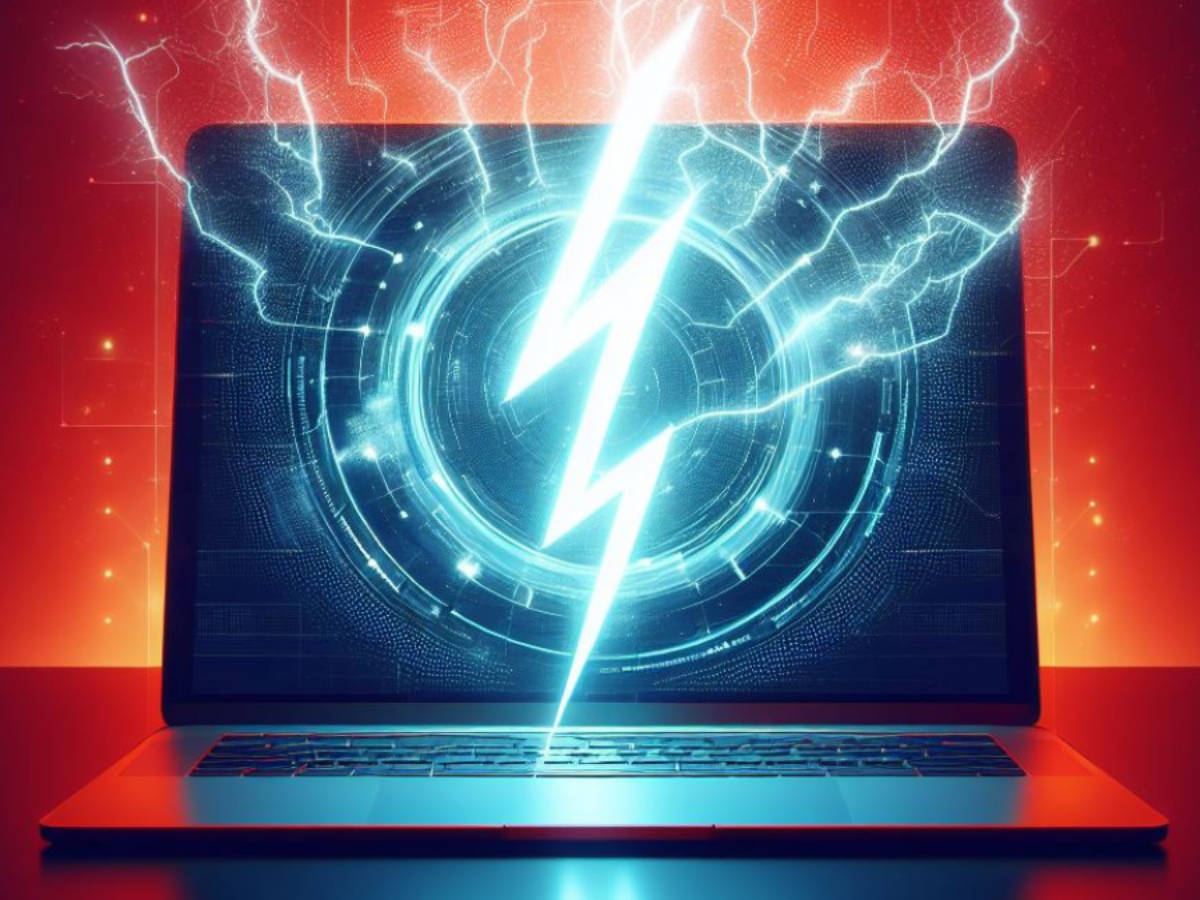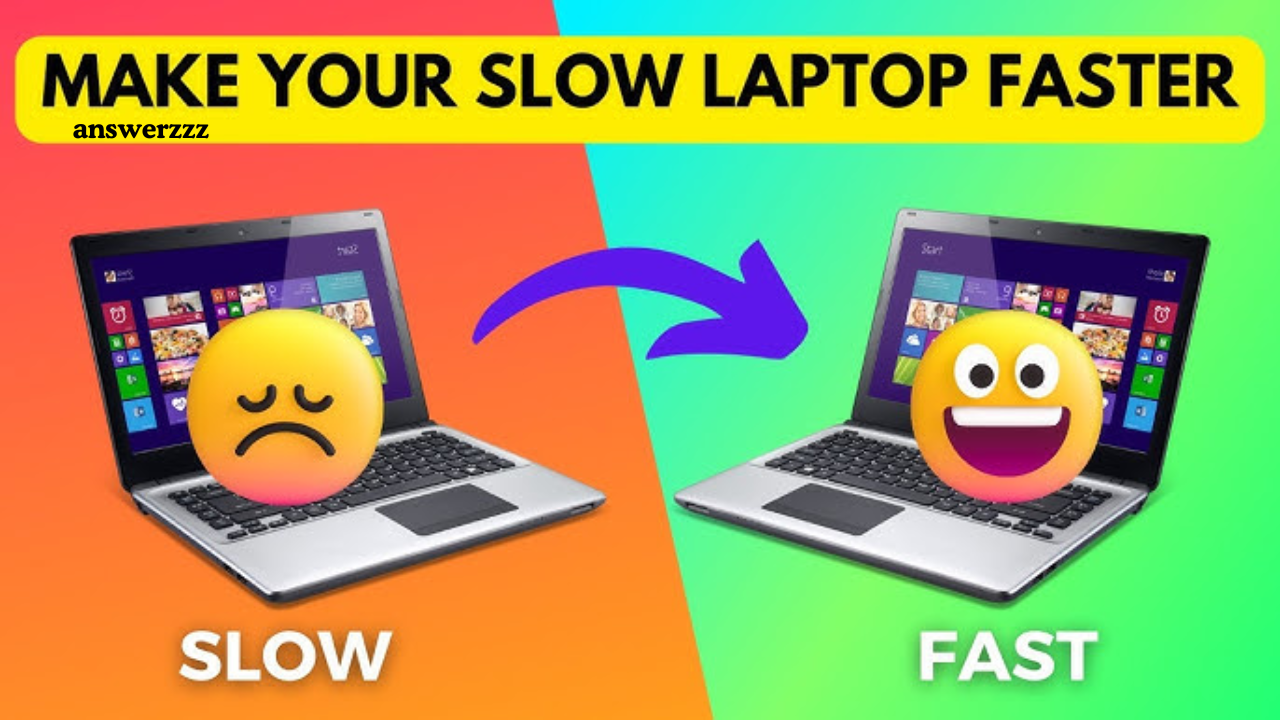In 2026, laptops continue to be indispensable tools for both work and personal use. However, no matter how new or advanced your laptop might be, it can slow down over time. A sluggish device hampers productivity, increases frustration, and can even become unusable if not addressed. This comprehensive guide will walk you through proven techniques to speed up your slow laptop, covering everything from basic maintenance to advanced performance optimizations.
1. Understanding Why Your Laptop is Slow

Before diving into the solutions, it’s important to understand the root causes of a slow laptop. Common reasons include:
- Too many background processes: Your laptop runs multiple processes at any given time, many of which are not necessary.
- Insufficient RAM: If your laptop has less than 8GB of RAM, it may struggle to handle modern applications efficiently.
- A full or fragmented hard drive: A near-full hard drive can slow down read/write speeds, while fragmentation reduces efficiency.
- Outdated software or drivers: Running outdated versions of software can lead to compatibility issues and poor performance.
- Malware and viruses: Infections can consume system resources and cause severe slowdowns.
Understanding these factors will help you better diagnose and solve the performance issues your laptop is experiencing.
2. Basic Fixes to Speed Up Your Laptop
Let’s start with some quick and easy fixes that can instantly boost your laptop’s performance.
Smart Home Hacks: 10 Tips for a More Efficient Connected Home
Restart Your Laptop
This may seem obvious, but a simple restart can clear temporary files, stop unnecessary processes, and refresh your system. Restarting your laptop at least once a week is a good habit.
Close Unnecessary Applications
Check for applications you aren’t currently using but are still running in the background. These apps consume CPU and RAM, which can slow down your laptop. Use the Task Manager (Ctrl + Shift + Esc) to see what’s running and close anything unnecessary.
3. Cleaning Up Unnecessary Files and Programs
Over time, your laptop accumulates temporary files, old downloads, and applications you no longer use. These can take up space and slow down your system.
Delete Temporary Files
Temporary files are created by applications to store short-term data but are often left behind even after they are no longer needed. In Windows, you can use the built-in Disk Cleanup tool or access the temporary files folder manually (%temp%) and delete its contents.
Uninstall Unused Programs
If you have software you haven’t used in months, it’s best to uninstall it. Go to the Control Panel (Windows) or Applications (Mac) and remove unnecessary programs. This will free up disk space and reduce background processes.
Empty the Recycle Bin
Deleted files are moved to the Recycle Bin, which still takes up space. Emptying the Recycle Bin can free up a significant amount of space on your hard drive.
4. Optimizing Startup Programs
Many programs are set to launch automatically when you start your laptop, which can significantly slow down your boot time.

Disable Startup Programs
To manage startup programs, open the Task Manager (Windows) or System Preferences > Users & Groups > Login Items (Mac). Disable any non-essential applications from launching on startup.
Use Lightweight Startup Managers
Consider using third-party startup management software like CCleaner or Autoruns (Windows) for more control. These tools offer detailed insights into what processes are running and help you disable the unnecessary ones.
5. Updating Your Operating System and Drivers
Running outdated software can slow down your laptop due to compatibility issues and bugs that have been resolved in newer versions.
Update Your Operating System
Ensure you have the latest version of Windows, macOS, or Linux installed. Regular updates often include performance enhancements and security patches that can speed up your laptop.
Update Drivers
Drivers are crucial for your laptop’s hardware components to function correctly. Outdated drivers can lead to sluggish performance. Visit the manufacturer’s website or use a tool like Driver Booster to update your drivers automatically.
Mastering the Metaverse: Tips for Navigating Virtual Worlds Safely
6. Upgrading Your Laptop’s Hardware
If software fixes aren’t cutting it, consider upgrading your laptop’s hardware. This is especially useful for older laptops.
Upgrade Your RAM
Adding more RAM can provide an immediate speed boost, especially if your laptop has less than 8GB. Most modern laptops can benefit from at least 16GB of RAM for optimal performance.
Switch to an SSD
If your laptop is still using a traditional hard drive (HDD), upgrading to a Solid-State Drive (SSD) can drastically reduce boot times and make applications load faster. SSDs have no moving parts, which makes them faster and more reliable.
Replace or Add a New Battery
A dying battery can cause your laptop to throttle performance to conserve power. If your laptop’s battery life has diminished significantly, replacing it can help maintain optimal performance.
7. Adjusting System Settings for Better Performance
Tuning your system settings can make a noticeable difference, particularly on older laptops.
Adjust Power Settings
On Windows, use the “High Performance” power plan to maximize speed. On a Mac, go to System Preferences > Energy Saver and select the “Maximum Performance” option. Keep in mind this will consume more battery.
Adjust Visual Effects
Turning off unnecessary visual effects can boost speed. On Windows, go to System > Advanced system settings > Performance settings and select “Adjust for best performance.” On macOS, disable “Reduce transparency” in the Accessibility menu.
8. Enhancing Browser Performance
Web browsing can often slow down your laptop, especially with modern resource-heavy websites.

Clear Browser Cache
Clearing your browser’s cache can speed up browsing by removing old and unnecessary files. Most browsers have this option under their settings menu.
Limit Browser Extensions
Extensions can be convenient but can also slow down your browsing experience. Disable or remove any that you don’t use frequently.
Use a Lightweight Browser
Consider using browsers like Brave or Opera, which are optimized for speed and minimal resource usage compared to Chrome.
9. Scanning for Viruses and Malware
Viruses, malware, and other unwanted programs can cause significant slowdowns by consuming system resources or altering critical settings.
Run a Full Virus Scan
Use a trusted antivirus program like Bitdefender, Norton, or Avast to run a full system scan. These scans can detect and remove harmful software.
Use Anti-Malware Tools
In addition to antivirus software, consider using a dedicated anti-malware tool like Malwarebytes. These programs can find and eliminate threats that traditional antivirus software might miss.
10. Final Tips for Long-Term Laptop Health
To maintain your laptop’s performance and avoid future slowdowns, follow these long-term maintenance tips:
Regular Maintenance
Schedule regular cleanups and system scans to prevent the buildup of unnecessary files and potential threats. Tools like CCleaner can help automate this process.
Backup Your Data
Frequently backing up your data ensures you don’t lose important files and can easily restore your system if something goes wrong. Use cloud services like Google Drive or external drives for backups.
Keep Your Laptop Cool
Overheating can cause your laptop to throttle performance. Make sure your laptop’s vents aren’t blocked, use a cooling pad if necessary, and avoid using it on soft surfaces like beds or couches.
Reinstall the Operating System
If all else fails and your laptop is still slow, consider reinstalling your operating system. This will wipe out all unnecessary files and software, giving you a fresh start. Be sure to back up your data before proceeding.
A slow laptop can be incredibly frustrating, but with the right strategies, you can restore it to its former speed. By understanding the common causes of sluggish performance and applying both simple and advanced fixes, you can ensure that your laptop remains fast and responsive well into 2026 and beyond. Whether it’s through software tweaks, hardware upgrades, or regular maintenance, keeping your laptop in top shape is entirely achievable.



